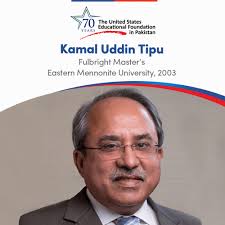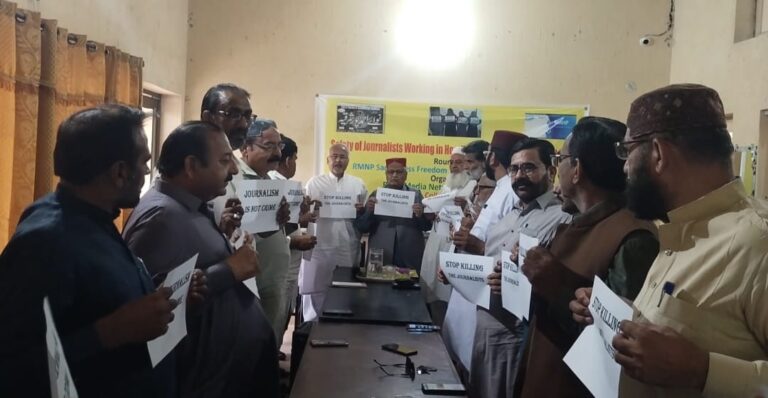World Press Freedom Day 2008
RMNP reports seven of 97 journalists killed world-wide are Pakistanis
The annual press freedom report released by Rural Media Network Pakistan (RMNP) in both English and Urdu by its president Ehsan Ahmed Sehar on the eve of World Press Freedom Day pointed out that of 97 journalists killed since the beginning of 2007, seven were Pakistanis.
According to the report more than 250 Pakistani journalists were arrested in 2007, and the transmission of 50 TV stations and 4 FM radio stations was suspended on 3rd November
after the imposition of emergency rule in Pakistan by President Prevez Musharraf.
RMNP report revealed that Mehboob Khan 22, a freelance photographer died on April 28 in a suicide bomb attack in Charsadda (NWFP) that was aimed at former Interior Minister Aftab Khan Sherpao.
Similarly on June 2 Noor Hakim Khan a correspondent for daily Pakistan was among five people killed by a roadside bomb attack in Bajur region of NWFP province.
On July 3 Javed Khan a journalist with Markaz and DM Digital TV was shot in the chest and neck while covering Lal Masjid incident.
Azhar Abbas Haidri of the Islamabad-based Post was found shot dead for unclear reasons in Karachi in October.
Rab Nawaz Chandio of the Daily Halchal in Hyderabad was shot dead in September.
Muhammed Arif, a cameraman for ARY One World TV, lost his life during the bombing of Benazir Bhutto’s welcome-home procession on October 18 while Zubair Ahmed Mujahid, correspondent for Urdu Language Daily Jang was shot in Mirpur Khas in Sindh province on November 23. He was allegedly murdered due to his investigative reporting.
The widow of journalist Hayatullah Khan was killed in the early hours of 17 November by a bomb planted outside her home in Mir Ali, North Waziristan. Mrs Khan, who was a school teacher, had been campaigning for justice following the murder of her husband, whose body was found in June last year six months after having been abducted. The investigation into the death of Mr Khan has been criticised as inadequate and the authorities have reportedly refused to publish the findings of a Peshawar judge’s inquiry.
RMNP report says that scores of journalists were beaten and arrested since the declaration of a state of emergency on 3 November. As part of the authority¹s concerted suppression of criticism, news outlets were closed and draconian legislation censoring the media was introduced.
On 20th November of more than 180 journalists in Karachi who were protesting against the media crackdown were apprehended out of which six journalists were beaten by police during the arrests, three of whom were removed to hospital for treatment. Moreover 20 journalists
were injured by police in Islamabad on Sept. 29, when they staged a sit-in in the scrutiny of presidential candidates’ nominations in front of Election Commission Islamabad office. . This led to a protest by the Pakistani journalists in London.
The RMNP report said the Federally Administered Tribal Areas, North-West Frontier Province, Baluchistan and Karachi were the most dangerous places for media personnel in Pakistan. The annual report highlighted the state of press freedom in rural Pakistan where not one training opportunity had been provided by the government or the big media houses.
Reporting on conflicts remained highly risky, and reporters as well as those working inside the media houses remained under threat from the authorities as well as from non-state actors, the RMNP said.
Report underlined the need to organise safety training courses in rural Pakistan especially for those journalist deputed to report conflicts. They should be provided life insurance and safety equipment by media houses.
RMNP report finishing by pointing out that “The fight against terrorism must contribute to the defence of democracy, not to its erosion.”
Source: RMNP 3 May 2008


